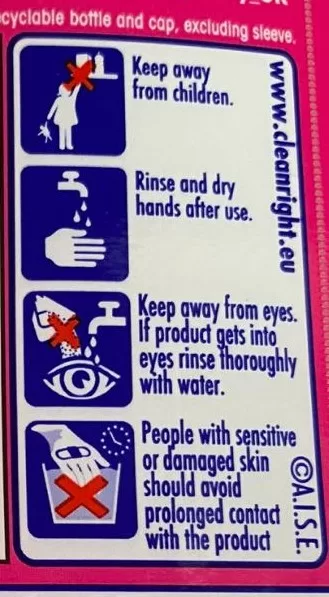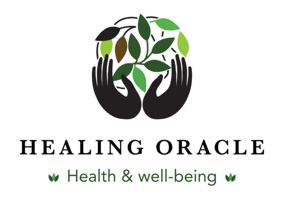As we have covered before on Healing Oracle, many of the mainstay household products that have been used for generations, can actually carry serious underlying risks to our health and wellbeing.
As we try to do the right thing of cleaning and sanitizing our environments, ourselves, and our clothes, are the products we choose causing more harm than good?
As we are sold more and more chemical products to clean our homes, our clothes and our bodies, so we are also seeing a correlation in the increase in allergies and cancers. According to studies, approximately 6% of the population is sensitized to cosmetic ingredients, especially preservatives and fragrances, whilst dermatitis and allergies are also on the increase.
The label on Unilever’s top selling laundry liquid Surf, for example, shows it contains 3 chemicals, all of which according to haz-map.com are hazardous, can cause skin irritation, dermatitis, and allergies.
These are Methylisothiazolinone, octylisothiazolinone and isoeugenol.
All three of these listed chemicals (as shown here) cause skin irritation and sensitivity, and 2 of them cause cancer. All 3 are on the HazMap .com listed as Hazardous Materials!

If the label tells us to wear protective gloves and avoid contact with skin, does it sound safe to use on our clothes?
 Did you know that they do not even have to display all the ingredients used, so what else is lurking in that bottle that might cause us even more harm?
Did you know that they do not even have to display all the ingredients used, so what else is lurking in that bottle that might cause us even more harm?
Let’s take a look at the ones they do display:
Methylisothiazolinone
Methylisothiazolinone is a disinfectant that is commonly used in cosmetics. Its also to be found in liquid soaps, paint, and even skin care products. Or is that more like skin scare, than skin care? Perhaps they just forgot to add the “s”.
Whilst Methylchloroisothiazolinone and Methylisothiazolinone are there to prolong the products life cycle by preventing the growth of bacteria, yeasts, and molds, what about the prolonging our life?
According to one Pub Med study Methylisothiazolinone can cause Dermatitis and skin Allergies, stating: “Increases in the allowable concentration of (MI) alone in these products has led to an epidemic of allergic contact dermatitis (ACD)”
Whilst studies in South Korea show that overexposure to Methylisothiazolinone causes skin lesions and apoptotic cell death.
Isoeugenol and isomers
Can also be found in detergents and is listed on Haz-Map.com as carrying a risk of skin irritation, allergies and dermatitis.
A study called Atopic Dermatitis and Skin Cancer Risk: A Systematic Review published on Pub Med shows the correlation between dermatitis and Skin cancer, stating that “Atopic dermatitis (AD) is one of the most common skin diseases, and it may be associated with skin cancer risk.
In this research, they evaluated 16 studies involving a total of 9,638,093 participants examining the contribution of AD to skin cancers that indicated that AD was significantly associated with an overall increased risk of skin cancer.”
Subgroup pooled analyses also showed that AD was statistically associated with an increased risk of basal cell carcinoma (BCC) and squamous cell carcinoma (SCC)… And an increased risk of nonmelanoma skin cancer (NMSC), BCC, and SCC.”
Octylisothiazolinone
Listed on Haz-map.com as a Disinfectant that can cause Allergic reactions on contact and dermatitis.
And thats only 3 chemicals they have to show, what of the others they do not show?
What is the combining factors of all of these toxic ingredients to your health?
Hazardous waste product
It would seem that in fact Surf laundry detergent is so hazardous, it might be best to not even pour it down the drain due to the harm it will cause to the water ways!
Or maybe we could all take it back to the store we bought it from, make a complaint asking why they are selling carcinogenic products to their customers and demand a refund?
Industrial advice states that most exposure is experienced during open pouring! So basically, you should wear gloves and a mask when you pour out your washing liquid?
The more toxins our bodies are trying to deal with, the sicker we become and the more pills we’ll need. Like the hamster wheel of health.
Unilever
A quick check of the company profile and it would seem that Unilever is going through a lot of changes. Of 33 officers there have been 30 resignations. This is pure speculation, but why are there are so many Directors resigning from their positions? Whilst there are some that have resigned twice.
Is this to do with the fact there are toxic ingredients in their products, or this to do with company politics?
Other ingredients in washing detergents to look out for, are:
Harmful Dyes – Dyes can cause developmental and reproductive toxicity. They can be an endocrine disruptor. Endocrine disruptors are linked to risks involving fetal development, reproductive systems, brain, immune, and other problems.
Chlorine – Harmful if swallowed, can cause severe skin burns, eye damage, respiratory irritation, and very toxic to aquatic life with long-lasting effects. Most commonly in the form of chlorine bleach that many people use to clean our homes and brighten our whites.
Formaldehyde – Another common preservative used in cosmetics, nail polish, and skincare products. Formaldehyde can also be found in laundry detergent as a chemical contaminant. It can cause respiratory and skin irritation and is a known carcinogen.
Synthetic Nonylphenol Ethoxylates (NPEs) – NPEs break down in the environment and are extremely toxic to fish and wildlife, threaten the health of the developing fetus and young children. These are hormone (endocrine) disruptors. Non-ionic surfactants (detergent-like substances) were once very common in laundry detergents, personal hygiene, house paints, and lawn care products.
Phosphates – These are naturally occurring minerals from the element phosphate that is typically used in agriculture and industry. They are known respiratory irritants, skin allergens, and known developmental and reproductive toxicants. They are found in a variety of household cleaners such as oven cleaners, drain cleaners, and toilet bowl cleaners.
Phthalates – These endocrine-disrupting “plasticizer” chemicals are everywhere in modern society. The Environmental Working Group (EWG) helped get several of these banned in children’s toys but they are still widely used chemicals that pollute almost everyone’s bodies.
Sodium Laureth Sulfate (SLES) – This is a common surfactant and emulsifier derived from Sodium Lauryl Sulfate (SLS) through a process called ethoxylation. Depending on the manufacturing process used, it may be contaminated with measurable amounts of ethylene oxide and 1,4-Dioxane
1,4-Dioxane (or just dioxane on some labels) – This product can be found in personal care products, shower gels, dish soap, and laundry detergent. It’s a contaminant of a process called ethoxylation that creates Sodium Laureth Sulfate. It is a known carcinogen and appears on California’s Prop 65 list of ingredients to avoid.
If you put enough chemicals together, you can make a bomb!
And so further research is needed is to show the combined effect of all of these chemicals together.
Individual studies have been made on the chemicals in isolation, whereas the missing research (that will probably never make it through) seems to be to establish what the effects the harmful effects are of all these chemicals combined in our washing machines, going onto the clothes that we then wear all day, onto the sheets we sleep on and the clothes our children wear.
What are the natural alternatives?
There are choices of detergent on the market that are free from these harmful, toxic ingredients. According to Readers Digest, the top 3 products to choose for health and environmental reasons are:
- Safest laundry detergent overall: Molly’s Suds Unscented Detergent Powder
- Best powder: Charlie’s Soap Laundry Powder
- Best detergent pods: Dropps Detergent Pods
Make your own natural detergent
Or, even better, with a few natural ingredients, you can make your own cost effective, home-made detergent.
It may take a little longer to make, but the health benefits far outweigh the hassle, whilst its also cheaper in the long run as you can make more and is of course far more ecological.
Ingredients
- Bicarbonate Soda
- 3% Hydrogen peroxide
- Borax
- Gentle dish soap
Follow these steps to make your own laundry detergent:
- Begin by boiling 8 cups of water.
- Next, add 2 cups of borax and 2 cups of baking soda.
- Dilute 1 cup of 3% hydrogen peroxide with 2 cups of water; add to mixture.
- Add 2 cups of dish soap and another 8 cups of boiling water.
- Once the mixture is well dissolved, you can choose to add in an essential oil (about 50 drops) to personalize the scent of your detergent.
- Let your homemade laundry detergent cool down to room temperature. It will thicken into a white powder consistency.
Good luck and we hope this information helps keep you heathy.
We hope you find this information helpful.
Love and Light
Sources:
Love and Light
The Healing Oracle Team
Please join our growing numbers on MeWe: Healing Oracle
Also join us on Twitter | YouTube
Global Petition
Please sign our global petition against enforced vaccinations The intention of this petition is to present 5 million signatures to each President, Prime Minister, Health Minister and heads of state worldwide.
Vaccines are a global problem and need to be tackled on a global level.
If we stand as one, we have a chance of saving the children of the future.

